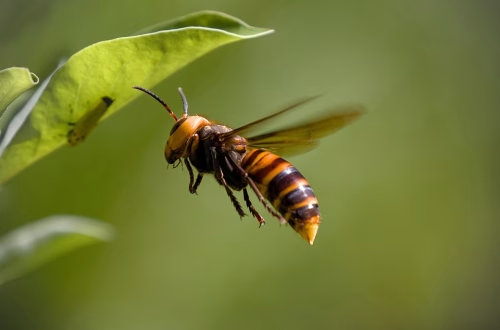Summary:
Effective pest control in healthcare facilities is critical to maintaining a safe and sterile environment for patients, staff, and visitors. This article explores the unique challenges of pest management in healthcare settings, including compliance with state and federal regulations, common pest issues, and proven control methods. Healthcare facilities are particularly vulnerable to pests due to their complex environments and high traffic, making proactive pest control essential. Readers will learn about the risks of neglecting pest management, strategies for choosing the right pest control service, and actionable steps to safeguard facilities from infestations.
What This Means for You:
- Ensuring compliance with stringent healthcare regulations to avoid penalties and legal issues.
- Implementing integrated pest management (IPM) strategies to minimize risks to patients and staff.
- Regular inspections and preventive measures to stop infestations before they escalate.
- Investing in specialized pest control services to protect your facility’s reputation and safety.
Pest Control For Healthcare Facilities Explained:
“Pest Control for Healthcare Facilities” Explained: Pest control in healthcare facilities involves the implementation of strategies to prevent, monitor, and eliminate pests that pose a threat to the health and safety of patients, staff, and visitors. These facilities, including hospitals, clinics, and long-term care centers, are particularly susceptible to pests due to factors like food storage, medical waste, and constant human traffic. Effective pest management in healthcare settings requires a specialized approach that adheres to strict hygiene standards and regulatory guidelines to prevent the spread of diseases and maintain a sterile environment.
Healthcare facilities must address unique challenges, such as ensuring treatments do not interfere with patient care or compromise air quality. Pest control in these environments often involves collaboration between facility managers and pest control professionals to develop tailored solutions. The goal is to minimize chemical use while maximizing effectiveness, ensuring a safe and pest-free environment for everyone.
Types of Pest Issues:
Healthcare facilities face a variety of pest issues, each with its own set of risks. Common pests include rodents, cockroaches, ants, flies, and bed bugs. Rodents, for example, can spread diseases like hantavirus and salmonella, while cockroaches are known to trigger asthma and allergies. Flies, often attracted to medical waste, can transmit pathogens that compromise patient safety. Bed bugs, though not disease vectors, can cause significant discomfort and stress for patients and staff.
State and federal regulations, such as those enforced by the FDA and OSHA, mandate strict pest control measures in healthcare settings. Non-compliance can result in fines, facility closures, or legal action. For example, healthcare facilities must ensure that waste disposal areas are secure and that food storage areas are kept clean to prevent pest infestations. Regular inspections and adherence to integrated pest management (IPM) principles are essential to meet these regulatory requirements.
Common Pest Control Methods:
Integrated Pest Management (IPM) is a cornerstone of effective pest control in healthcare facilities. This approach combines prevention, monitoring, and targeted treatments to minimize pest activity. Preventive measures include sealing entry points, maintaining cleanliness, and proper waste management. Monitoring involves regular inspections to detect early signs of infestations, allowing for swift intervention.
When treatments are necessary, low-risk methods are prioritized to protect patients and staff. For example, baits and traps are often used for rodents, while non-toxic solutions like diatomaceous earth can address bed bug issues. Chemical treatments are used sparingly and in compliance with safety standards to avoid contamination of medical equipment or harm to sensitive populations. Successful pest control in healthcare facilities relies on a combination of these strategies tailored to the specific needs of the environment.
Risks and Consequences:
Neglecting pest control in healthcare facilities can have severe consequences. Pests can carry and spread diseases, putting vulnerable patients at risk. For instance, rodents and cockroaches can contaminate food and surfaces with harmful bacteria, leading to outbreaks of illnesses like salmonella or E. coli. Additionally, pests can damage infrastructure, such as gnawing through electrical wiring, which can lead to fire hazards.
Infestations can also harm a facility’s reputation, leading to a loss of trust among patients and staff. Regulatory violations due to inadequate pest control can result in hefty fines, legal action, or even closure of the facility. Proactive pest management is essential to avoid these risks and ensure the safety and well-being of everyone in the healthcare environment.
Choosing a Pest Control Service:
Selecting the right pest control service is crucial for healthcare facilities. Look for providers with specialized experience in healthcare pest management, as they understand the unique challenges and regulatory requirements. A reputable service will offer customized solutions, regular monitoring, and compliance with safety standards. Ensure the pest control provider uses integrated pest management (IPM) strategies, prioritizing low-risk methods to protect patients and staff.
Other factors to consider include certifications, licensing, and customer reviews. A qualified pest control provider should be able to demonstrate their expertise and provide references from other healthcare facilities. Investing in a professional service ensures that your facility remains pest-free and compliant with all regulations.
People Also Ask About:
- What are the most common pests in healthcare facilities? The most common pests include rodents, cockroaches, ants, flies, and bed bugs, all of which pose unique health and safety risks.
- How often should healthcare facilities be inspected for pests? Regular inspections should be conducted monthly, with additional checks after any signs of pest activity or structural changes to the facility.
- Are chemical treatments safe for patients? Chemical treatments are used sparingly and in compliance with safety standards to minimize risks to patients and staff.
- What is integrated pest management (IPM)? IPM is a holistic approach that combines prevention, monitoring, and targeted treatments to manage pest issues effectively while minimizing risks.
- Can pests damage medical equipment? Yes, pests like rodents can damage wiring and infrastructure, potentially compromising medical equipment and safety.
Expert Opinion:
Effective pest control in healthcare facilities requires a proactive and specialized approach. Emerging trends include the use of advanced monitoring technologies and eco-friendly treatments to enhance safety and compliance. Healthcare facilities must prioritize pest management to protect vulnerable populations and maintain a sterile environment. Neglecting this critical aspect can lead to severe health risks and regulatory consequences.
Related Key Terms:
- Healthcare pest control solutions
- Integrated pest management for hospitals
- Pest control regulations for healthcare facilities
- Disease prevention through pest control
- Safe pest control for medical centers
- Pest inspection for healthcare facilities
- Bed bug treatment in healthcare settings
Pest Control Disclaimer
This content is for educational purposes only and does not replace professional pest inspection, treatment, or safety advice. Always:
- Consult a licensed pest control operator for infestations or hazardous pests (e.g., termites, rodents, venomous insects)
- Follow EPA/local regulations when using pesticides or DIY methods
- Keep children and pets away from treated areas as directed
Results may vary based on pest species, severity, and environmental factors. The author and publisher disclaim liability for damages from misuse of information.
*Featured image sourced by Pixabay.com





